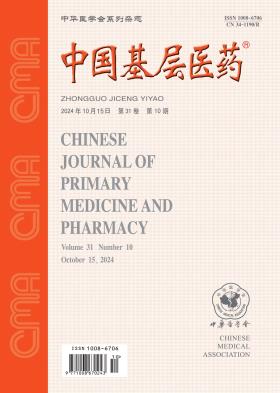基于T2标测的急性心肌梗死心肌水肿定量检测
引用次数: 0
摘要
目的探讨基于T2标测定量检测急性心肌梗死心肌水肿的临床意义。方法选择2018年7月至2019年2月在温州市人民医院接受心脏MRI介入治疗的20例患者(观察组)。另选择20名健康志愿者作为对照组。收集观察组的图像数据,对图像数据进行后处理。通过图像信息测量并记录梗死心肌及其对侧正常心肌的T2值、水肿面积和微循环障碍面积。记录梗死心肌和对侧正常心肌。比较T2值,并比较两组的心脏MRI、心功能、血清学标志物和心力衰竭相关产品。结果观察组患者对梗死心肌和正常心肌进行自我比较。远端梗死心肌T2值为(90.14±.51)ms,高于正常心肌[(60.71±5.15)ms],差异有统计学意义(t=8.49,P<0.05),观察组左室舒张末期容积[(88.5±16.2)mL]高于对照组[(72.4±15.1)mL],差异有统计学意义(t=12.51,P<0.05),观察组射血分数为(54.1±11.2)%,观察组T2值为(69.4±6.4)ms,高于对照组[(55.2±11.4)ms](t=11.98,P<0.05),差异有统计学意义(Z=27.62,P<0.05)。T2标测显示心肌梗死的敏感性和阳性预测值较高,但其特异性相对较低。结论定量T2标测对评价急性心肌梗死后心肌水肿具有较高的临床价值。T2标测可用于分析急性心肌梗死患者的病变程度。关键词:磁共振成像;心肌梗死;心肌缺血;水肿;肌酸激酶;中风量;肌钙蛋白;心脏成像技术本文章由计算机程序翻译,如有差异,请以英文原文为准。
Quantitative detection of myocardial edema in acute myocardial infarction based on T2 mapping
Objective
To investigate the clinical significance of quantitative detection of myocardial edema in acute myocardial infarction based on T2 mapping.
Methods
From July 2018 to February 2019, a total of 20 patients (observation group) who underwent cardiac MRI after interventional therapy in the People's Hospital of Wenzhou were enrolled.Another 20 healthy volunteers were selected as the control group.The image data of the observation group were collected, and the image data were post-processed.The T2 value, edema area and microcirculation obstacle area of the infarcted myocardium and its contralateral normal myocardium were measured and recorded by the image information.The infarcted myocardium and the contralateral normal myocardium were recorded.The T2 values were compared and the cardiac MRI, cardiac function, serological markers and heart failure related products of the two groups were compared.
Results
The patients in the observation group underwent self-comparison between infarcted myocardium and normal myocardium.The T2 value of the distal infarcted myocardium was (90.14±.51)ms, which was greater than that of the normal myocardium [(60.71±5.15)ms], the difference was statistically significant(t=8.49, P<0.05). The number of myocardial microvascular obstruction (MVO) in the observation group was 17 cases, which in the control group was 0 cases, the difference was statistically significant (χ2=41.45, P<0.05). The left ventricular end-diastolic volume of the observation group[(88.5±16.2)mL] was higher than that of the control group[(72.4±15.1)mL], and the difference was statistically significant (t=12.51, P<0.05). The ejection fraction of the observation group was (54.1±11.2)%, which was lower than that of the control group [(71.2±7.9)%], and the difference was statistically significant (t=18.71, P<0.05). The T2 value of the observation group was (69.4±6.4)ms, which was higher than that of the control group[(55.2±11.4)ms](t=11.98, P<0.05). The degree of myocardial delayed imaging (LGE) in the observation group was 13%, which in the control group was 0%, the difference was statistically significant (Z=27.62, P<0.05). T2 mapping showed that myocardial infarction sensitivity and positive predictive value were higher, but its specificity was relatively low.
Conclusion
Quantitative T2 mapping has high clinical value in the evaluation of myocardial edema after acute myocardial infarction.T2 mapping can be used to analyze the extent of lesions in patients with acute myocardial infarction.
Key words:
Magnetic resonance imaging; Myocardial infarction; Myocardial ischemia; Edema; Creatine kinase; Stroke volume; Troponin; Cardiac imaging techniques
求助全文
通过发布文献求助,成功后即可免费获取论文全文。
去求助
来源期刊
CiteScore
0.10
自引率
0.00%
发文量
32251
期刊介绍:
Since its inception, the journal "Chinese Primary Medicine" has adhered to the development strategy of "based in China, serving the grassroots, and facing the world" as its publishing concept, reporting a large amount of the latest medical information at home and abroad, prospering the academic field of primary medicine, and is praised by readers as a medical encyclopedia that updates knowledge. It is a core journal in China's medical and health field, and its influence index (CI) ranks Q2 in China's academic journals in 2022. It was included in the American Chemical Abstracts in 2008, the World Health Organization Western Pacific Regional Medical Index (WPRIM) in 2009, and the Japan Science and Technology Agency Database (JST) and Scopus Database in 2018, and was included in the Wanfang Data-China Digital Journal Group and the China Academic Journal Comprehensive Evaluation Database.

 求助内容:
求助内容: 应助结果提醒方式:
应助结果提醒方式:


